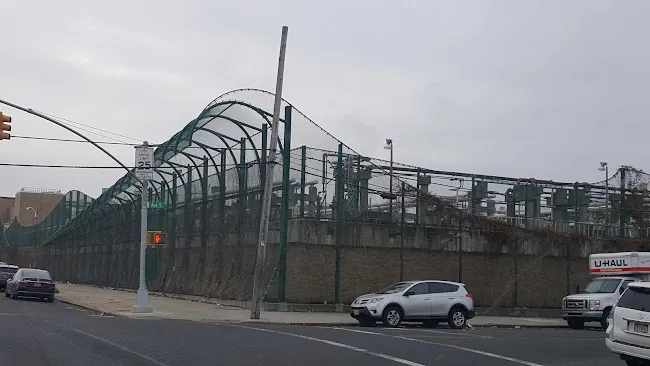
Coney Island Wastewater Treatment Plant
Business Information
Category: Sewage treatment plant
Address: 3002 Knapp St Brooklyn, NY 11235 United States
District: Downtown Manhattan
Phone: -
Working Hours: Closes at 15:00
Website: https://www1.nyc.gov/site/dep/water/wastewater-treatment-system.page
Rating:
Location
About
Coney Island Wastewater Treatment Plant: An Overview
The Coney Island Wastewater Treatment Plant (CIWTP) is a critical infrastructure facility located in Brooklyn, New York. Operated by the New York City Department of Environmental Protection (DEP), this plant plays an essential role in managing the city's wastewater and ensuring environmental protection. With a treatment capacity of approximately 310 million gallons per day, CIWTP serves a significant portion of Brooklyn, including neighborhoods such as Coney Island, Brighton Beach, and Sheepshead Bay.
Functionality and Operations
The primary function of the Coney Island Wastewater Treatment Plant is to treat sewage and wastewater before it is released into the surrounding waterways. The treatment process involves several stages, including preliminary treatment, primary treatment, secondary treatment, and disinfection. During preliminary treatment, large debris such as plastics and rags are removed from the incoming wastewater. This is followed by primary treatment, where solids settle out of the water.
In the secondary treatment phase, biological processes are employed to further break down organic matter. This is achieved through aeration tanks where microorganisms consume organic pollutants. Finally, disinfection methods—typically using chlorine or ultraviolet light—are applied to eliminate harmful pathogens before the treated water is discharged into Jamaica Bay.
Environmental Impact
The Coney Island Wastewater Treatment Plant not only focuses on treating wastewater but also emphasizes sustainability and environmental stewardship. The facility has implemented various initiatives aimed at reducing its carbon footprint and enhancing energy efficiency. For instance, CIWTP utilizes advanced technologies for energy recovery from biogas produced during the digestion of sludge.
Moreover, the plant plays a vital role in protecting local ecosystems by ensuring that treated effluent meets stringent regulatory standards set forth by both state and federal agencies. By maintaining high-quality effluent discharge standards, CIWTP helps safeguard marine life in Jamaica Bay and contributes to overall water quality improvements in New York Harbor.
Community Engagement
CIWTP recognizes its responsibility to engage with the local community regarding its operations and environmental impact. The facility often hosts educational programs for schools and community groups to raise awareness about wastewater management and environmental conservation. These outreach efforts aim to foster a better understanding of how residents can contribute to sustainable practices within their own households.
Additionally, CIWTP participates in various citywide initiatives focused on improving urban resilience against climate change impacts. This includes efforts related to stormwater management and flood prevention strategies that benefit both the plant's operations and surrounding neighborhoods.
Conclusion
In summary, the Coney Island Wastewater Treatment Plant stands as a cornerstone of Brooklyn's infrastructure, providing essential services that protect public health and enhance environmental quality. Through its comprehensive treatment processes, commitment to sustainability, and active community engagement efforts, CIWTP exemplifies modern wastewater management practices while addressing the challenges posed by urbanization and climate change.
AUTHORITATIVE SOURCES
New York City Department of Environmental Protection - Coney Island Wastewater Treatment Plant
↩
NYC Environmental Protection - Wastewater Treatment
↩
U.S. Environmental Protection Agency - Wastewater Technology Fact Sheet↩
Social Media
Business Districts and Categories
Customer Reviews
Please sign in with Google to leave a review.
0 Reviews
There are no reviews for this business yet. Be the first to leave a review!
Technical Information
Machine ID: /g/11h0ltgyw
Feature ID: 0x89c2437f9cb26fa3:0x11fba7317eaf2df5
Created Date: 19 January 2025, 21:54
View Count: 57 views
Maps: View on Google Maps